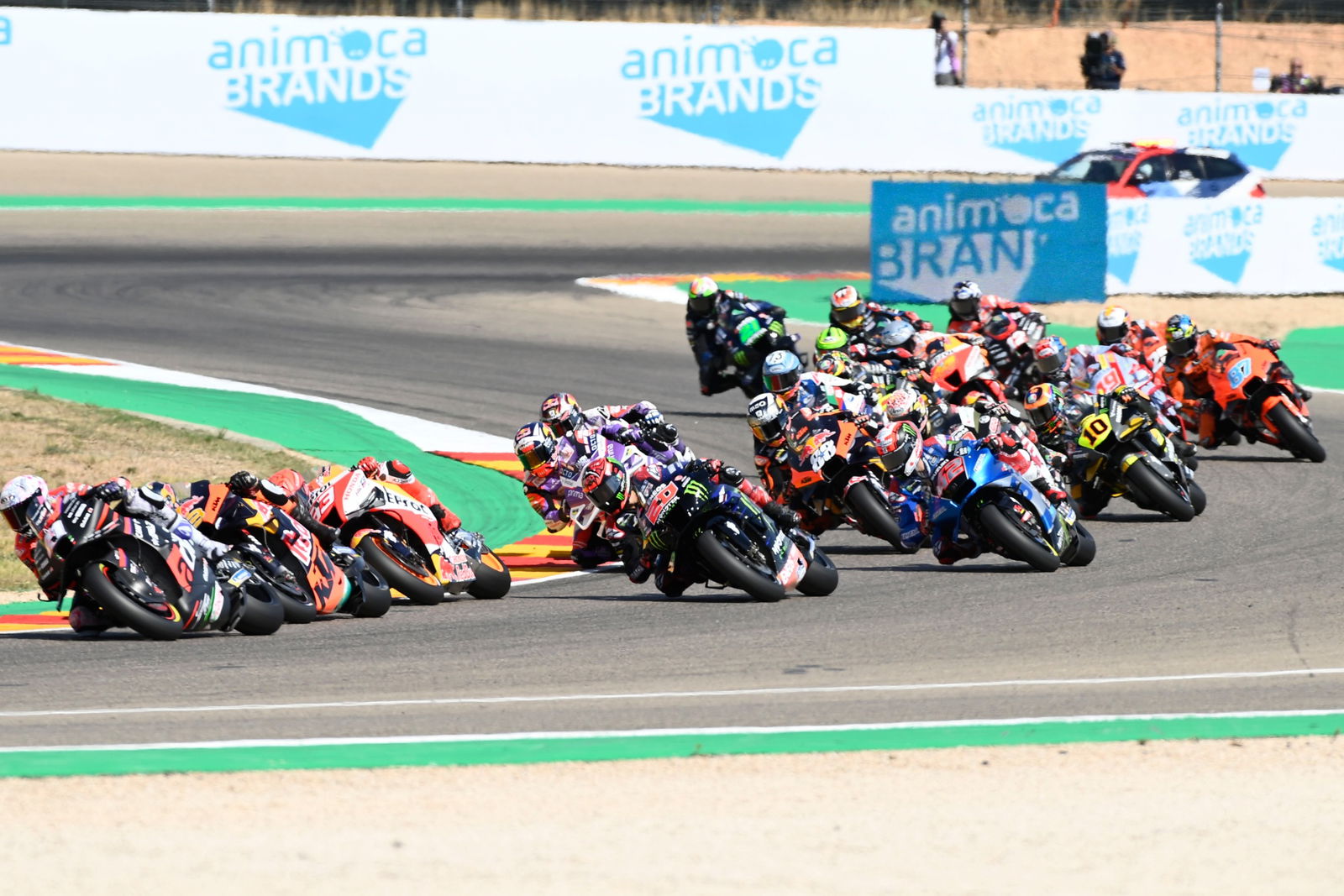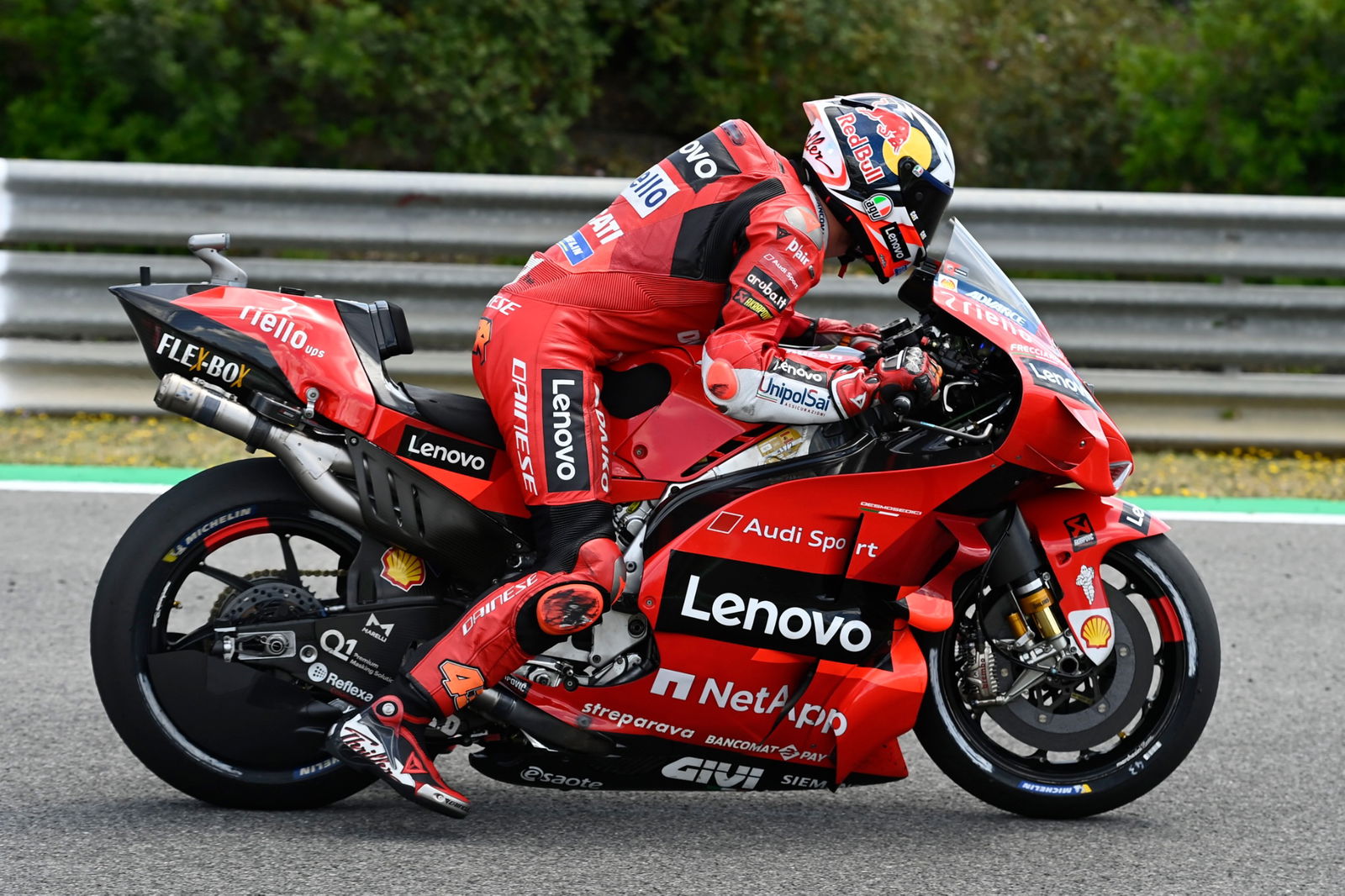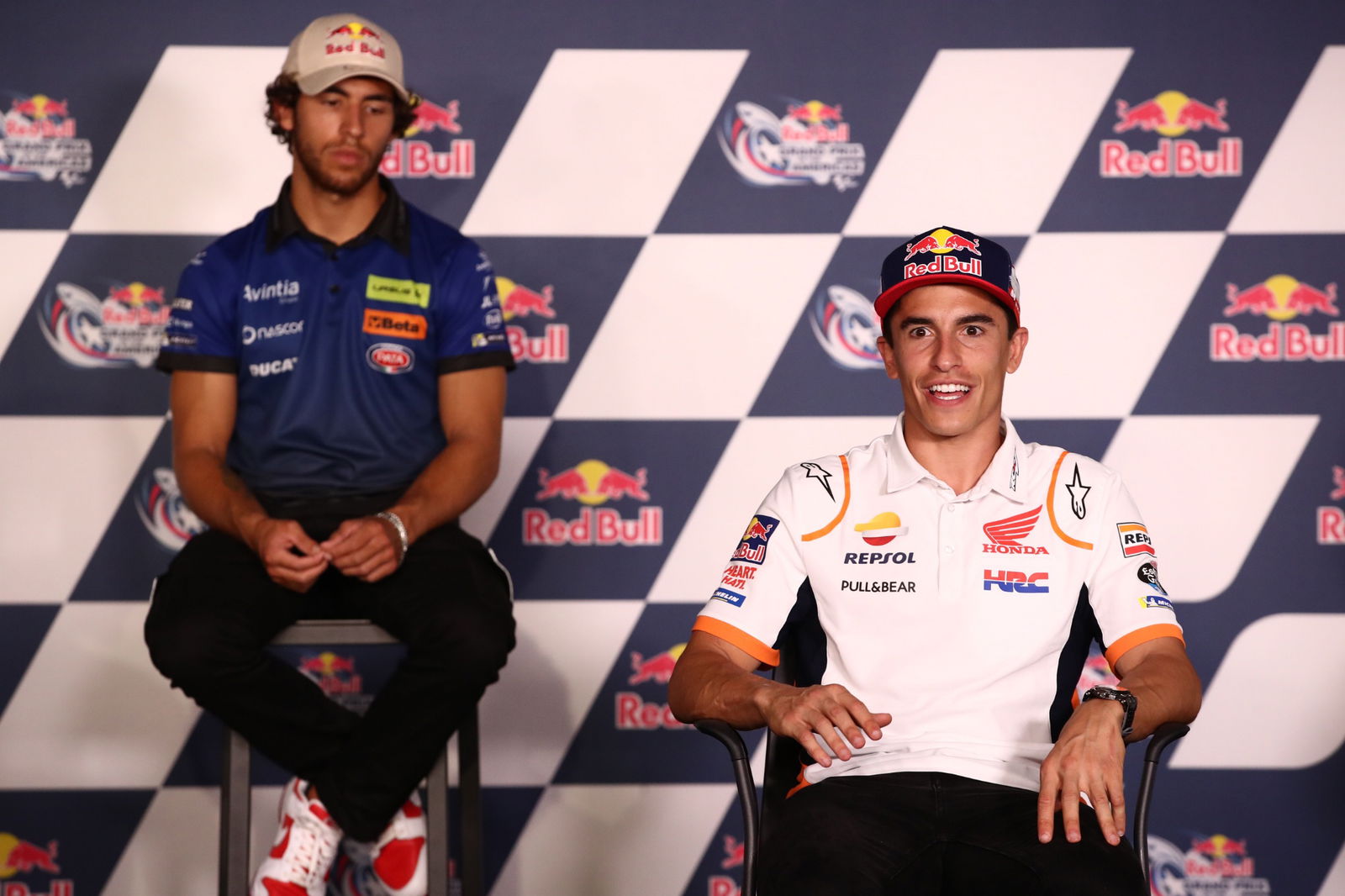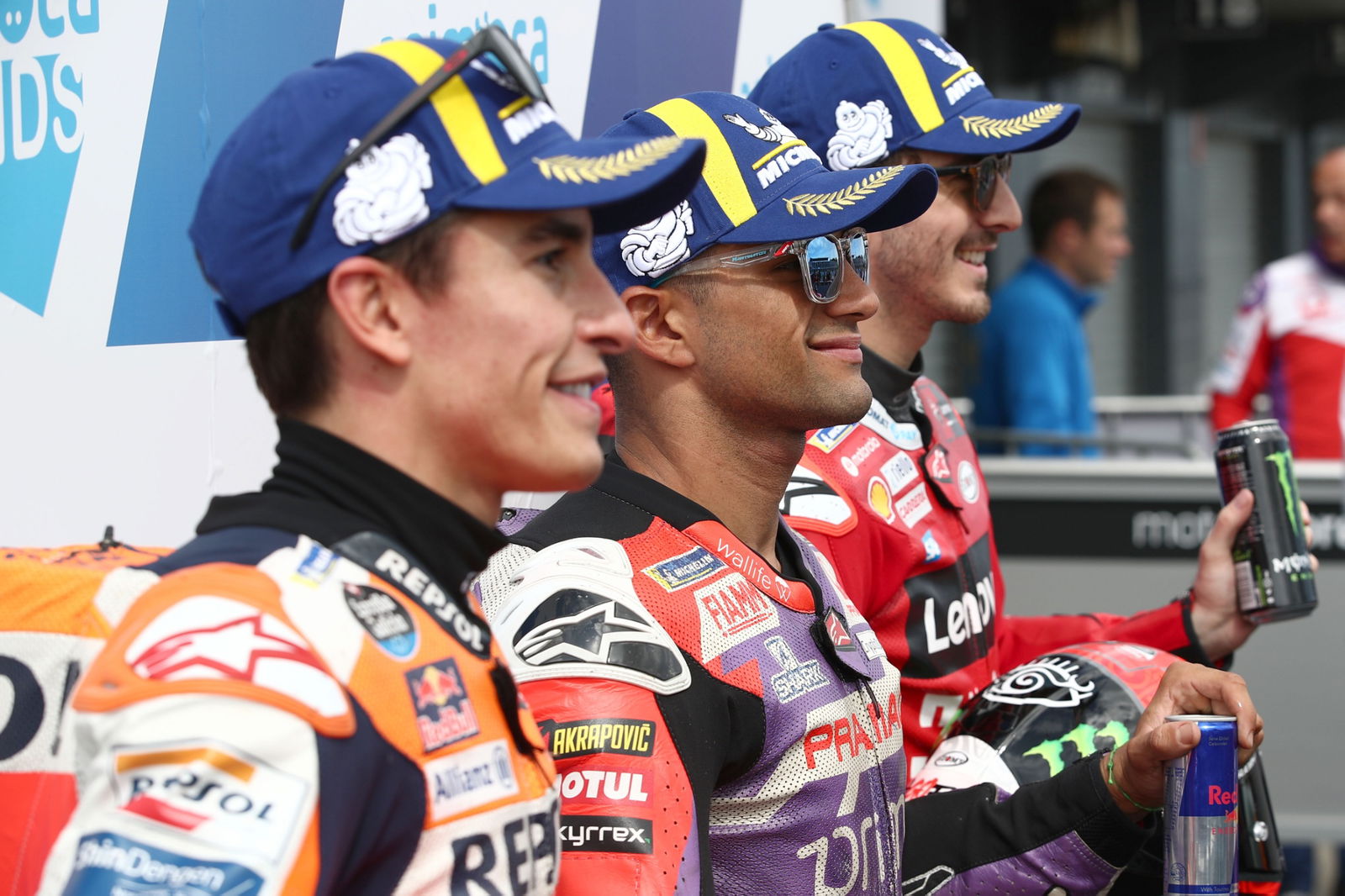Keith Huewen: Prototype vs cost ‘a nightmare’ for MotoGP rulemakers

Ducati’s five rivals all voted to ban the front system - but retain the rear, for now - mostly on the basis that the mechanical ride-height system does not have relevance to production bikes.
But does that really matter, given the premier-class has other non-road applicable technology such as seamless gearboxes and carbon brakes. Afterall, an F1 car has little in common with a road vehicle.
Speaking in the latest edition of the Crash.net MotoGP podcast, MotoGP editor Pete McLaren explained:
“It was legal, and so that’s why Ducati were not happy about the front ride-height ban. But on the other hand, ride-height devices are not what the sport wanted when they drew up the technical rules.
- Keith Huewen: ‘Miguel Oliveira, Aprilia could be the shock of MotoGP 2023’
- ‘We are going to war!’ - Yamaha adds camouflage to 2023 MotoGP livery
- Quartararo ‘on a bike soon’ after winter injury, ‘I want the title back’
“So you've got this compromise, which MotoGP director of technology Corrado Cecchinelli was explaining, between trying to give the clever people the benefit for coming up with something that's legal - and you see this in Formula One a lot also – but at the same time, it’s not an area that the sport wants to go into.
“If you were going to build a ride-height device for a road bike, you would do it electronically. That is already banned under the MotoGP rules; What Ducati did was very cleverly come up with a working mechanical system that doesn't use electronics.
“That's why it's legal, and it obviously helps with performance. But at some stage the rulemakers felt they have got to rein it in.”

'You’ve got to look at what is best for the sport'
Former grand prix rider and British champion Huewen said: “We had all this furore before with the Ducati ‘scoop’, was it a tyre cooling device or an aero thing? You are always going to be in a position where clever people come up with a slight loophole or way around a rule.
“Like in F1, as you said Pete, they allowed Ducati to have the front ride-height for a year because otherwise you are penalising innovation. Penalising innovation is a bad thing, but I also think sometimes you’ve got to look at what is best for the sport and the dangers of bikes becoming too quick for the racetracks.”
McLaren added: “During the technical press conference at Aragon, with all the manufacturers talking about the front ride-height ban, the differences between them were obvious.
“The main split seemed to come down to the question of whether something is road relevant or not.
“Most of the five factories that voted for the front ride-height ban gave the reason that they don’t see it as having any road relevance, also partly because you’d do ride-height with electronics if you really wanted it.
“On the other hand, look at a Formula One car, where is the road car relevance there? In MotoGP you've also got seamless gearboxes, carbon brakes… So how much does the question of ‘can we put this on a road bike’ matter?
“There's no clear answer, but it was repeatedly raised by the manufacturers opposed to Ducati on the ride-height issue.
“Ducati pointed out ‘never say never’ and you can look at wings as a recent development that’s starting to move from MotoGP to road.
“Honda’s take on the seamless gearbox, which they pioneered, was also quite interesting. They pointed out that, while they can’t use it on the road, they’ve learned a lot from the control of the gearbox that they have been able to transfer across.
“When you can apply bits of knowledge like that, the whole race-to-road question gets even murkier, doesn't it?
“But for a lot of manufacturers, the fundamental question seems to be, does this technology have a production future or not?”

‘Finding prototype vs cost balance is just a nightmare’
“I think budget is the big problem,” said Huewen. “MotoGP is a prototype series. But if you don't have a cost cap, just think back to the days of six-cylinder 125s or whatever, with a powerband of 1000 RPM and God knows how many gears to try and cope with that.
“The cost of producing prototypes like that is so huge you wouldn't have a sport in the end. It would end up being dominated by one manufacturer who could afford to spend the millions and millions and millions.
“So the rule book has several functions. Obviously it allows technical innovation to be promoted, but it also has an effect of putting a cap on how much money you can spend to get somewhere.
“And that balance is just a nightmare. Which is why I’ve contradicted myself about half a dozen times, because I think personally, in a prototype series. you should be able to do whatever you want to do.
"But realistically, things like ride-height adjusters and stuff like that. You've got to say to yourself ‘who's that benefiting in the long run?’
“So there's a whole load of issues that politically you've got to work out, as well as technically and then budgetary. Who'd want to sit on that bench and work it all out? Not me! I'm just going to shout from the sidelines!“

‘The organisers and manufacturers have to look into their crystal ball’
“As far as the rear ride-height device, it sounds like they will try to get rid of them as well, by the end of the current five-year contract with the factories, which runs out in 2026," McLaren said.
“Earlier timing depends on agreement from the manufacturers, but they normally try to keep the technical rules as stable as possible within each five-year contract. The front ride-height ban was actually suggested as a preventative measure by Dorna because it was thought no-one was yet using it.
“So 2027 is when we are likely to see not only the rear ride-height device gone, but also some bigger technical changes as well – what will the engines be, for example?
“This is where the organisers and manufacturers have to try and look into their crystal ball and decide, what's the future of the sport? What's the future of the industry? And then write rules to fit around that.
“Really difficult to do, but that’s part of the game.”
Download Episode 73 at the following links...

